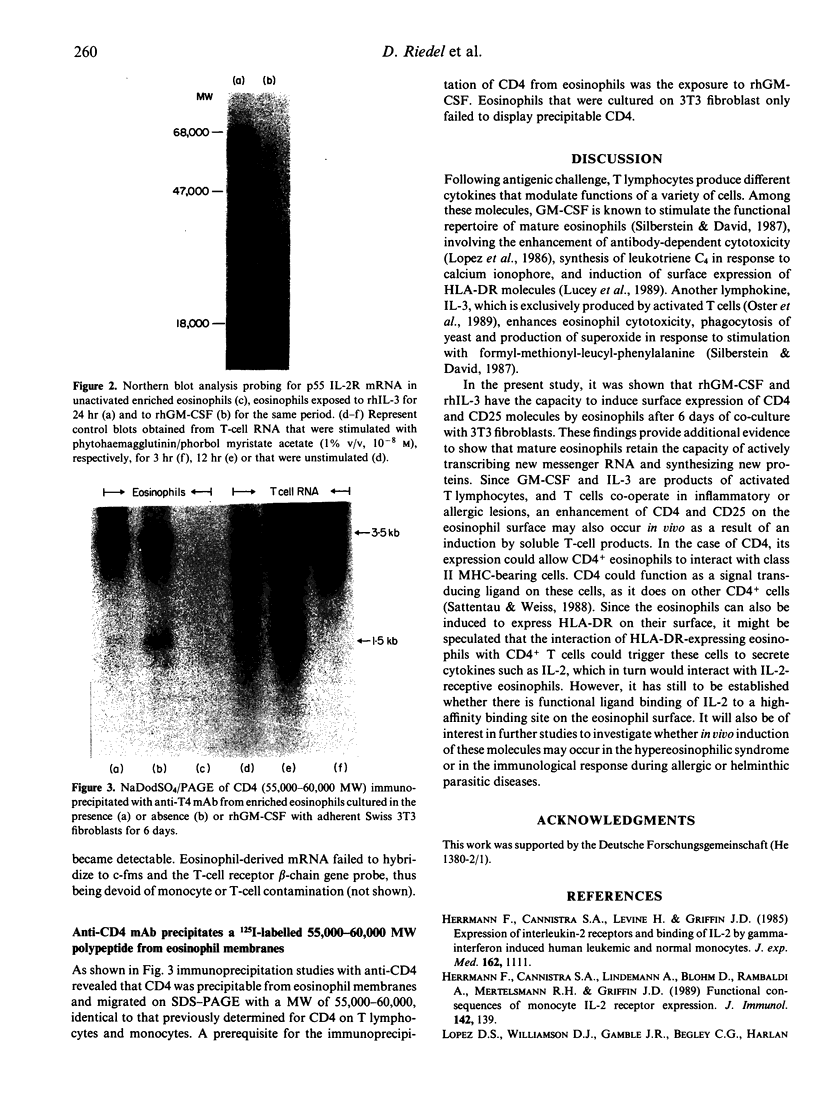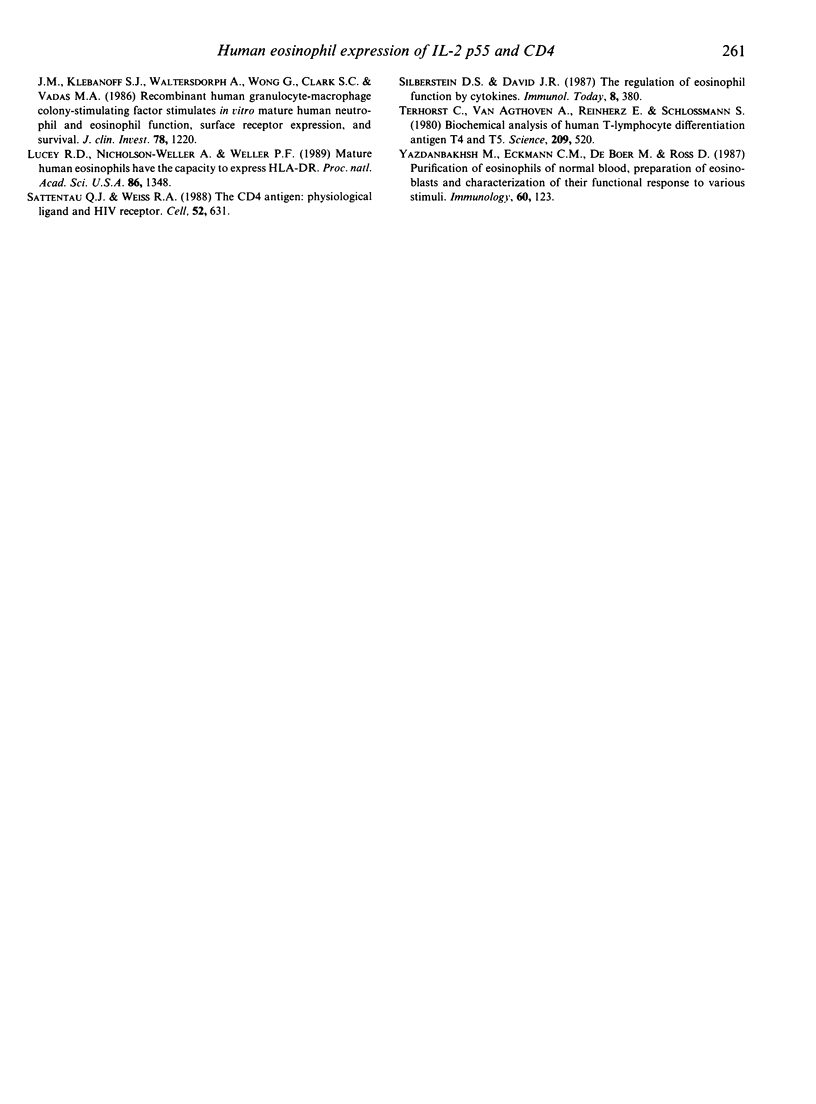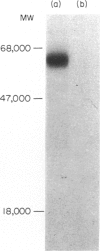Abstract
In this report it is shown by immunofluorescence analysis, biochemical analysis and mRNA hybridization that human eosinophils express surface CD4 and interleukin-2 receptor (IL-2R) (CD25) when exposed to eosinophil activators granulocyte-macrophage colony-stimulating factor (GM-CSF) and IL-3. Although the functional role of eosinophil CD4/CD25 expression has to be elucidated, it will be of interest in further studies to investigate whether in vivo induction of these molecules occurs in association with certain disease processes such as the hypereosinophilic syndrome or in immunological responses during allergic and helminthic parasitic diseases.
Full text
PDF



Images in this article
Selected References
These references are in PubMed. This may not be the complete list of references from this article.
- Herrmann F., Cannistra S. A., Levine H., Griffin J. D. Expression of interleukin 2 receptors and binding of interleukin 2 by gamma interferon-induced human leukemic and normal monocytic cells. J Exp Med. 1985 Sep 1;162(3):1111–1116. doi: 10.1084/jem.162.3.1111. [DOI] [PMC free article] [PubMed] [Google Scholar]
- Herrmann F., Cannistra S. A., Lindemann A., Blohm D., Rambaldi A., Mertelsmann R. H., Griffin J. D. Functional consequences of monocyte IL-2 receptor expression. Induction of IL-1 beta secretion by IFN gamma and IL-2. J Immunol. 1989 Jan 1;142(1):139–143. [PubMed] [Google Scholar]
- Lopez A. F., Williamson D. J., Gamble J. R., Begley C. G., Harlan J. M., Klebanoff S. J., Waltersdorph A., Wong G., Clark S. C., Vadas M. A. Recombinant human granulocyte-macrophage colony-stimulating factor stimulates in vitro mature human neutrophil and eosinophil function, surface receptor expression, and survival. J Clin Invest. 1986 Nov;78(5):1220–1228. doi: 10.1172/JCI112705. [DOI] [PMC free article] [PubMed] [Google Scholar]
- Lucey D. R., Nicholson-Weller A., Weller P. F. Mature human eosinophils have the capacity to express HLA-DR. Proc Natl Acad Sci U S A. 1989 Feb;86(4):1348–1351. doi: 10.1073/pnas.86.4.1348. [DOI] [PMC free article] [PubMed] [Google Scholar]
- Sattentau Q. J., Weiss R. A. The CD4 antigen: physiological ligand and HIV receptor. Cell. 1988 Mar 11;52(5):631–633. doi: 10.1016/0092-8674(88)90397-2. [DOI] [PubMed] [Google Scholar]
- Terhorst C., van Agthoven A., Reinherz E., Schlossman S. Biochemical analysis of human T lymphocyte differentiation antigens T4 and T5. Science. 1980 Jul 25;209(4455):520–521. doi: 10.1126/science.6967228. [DOI] [PubMed] [Google Scholar]
- Yazdanbakhsh M., Eckmann C. M., De Boer M., Roos D. Purification of eosinophils from normal human blood, preparation of eosinoplasts and characterization of their functional response to various stimuli. Immunology. 1987 Jan;60(1):123–129. [PMC free article] [PubMed] [Google Scholar]





